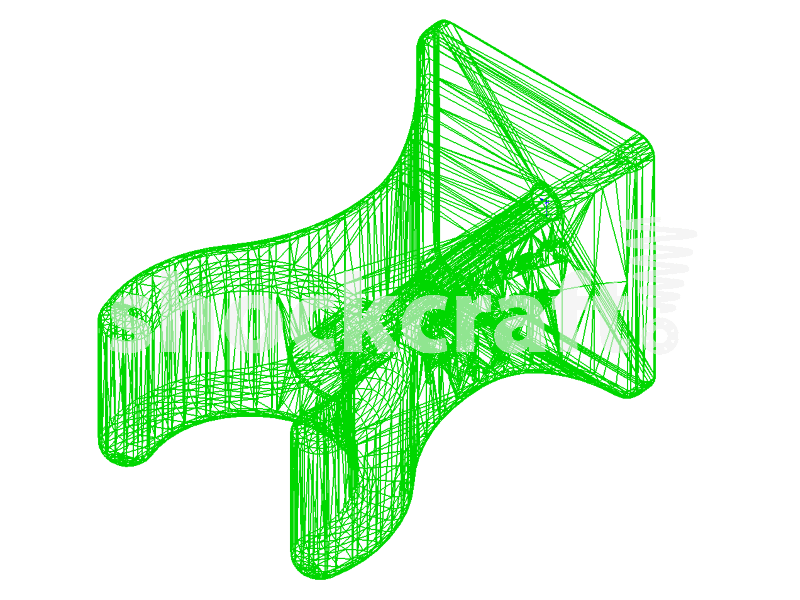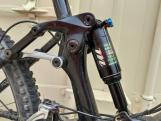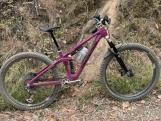You have no items in your shopping cart.
-
Forks
- Book Service & Tuning
- Service Info & Pricing
- Find Your Fork
- Parts for Forks
- Full Service Kits (seals, tools & oils)
- Factory & SC Rebuild Kits
- Wiper Kits
- Internal Seal Kits
- Seals Individual
- Air Shafts & Parts
- Axles
- Bearings
- Bolts & Screws
- Bushings
- Coil Springs & Ride Kits
- Crush Washers
- Damper Parts
- Foam Rings
- Hose Guides
- Knobs
- Lower Legs
- Mud Guards
- Remotes & Lockout
- Travel Spacers
- Update Parts
- Valves & Parts
- Volume Spacers
- CSUs
- Tuning & Upgrades for Forks
- New Forks
- Bike Fitments
- Shocks
- Droppers
- Lubricants
-
Tools
- Shockcraft Tools
- Air Tools, Pumps & Fittings
- BB Tools
- Bearing Tools
- Bleed Tools & Fittings
- Brake Tools
- Bushing Tools
- Cassette Tools
- Clamp Blocks
- Cleaning
- Dropper Post Tools
- Fork Tools
- Hex Wrench Tools (Allen Keys)
- Hub Tools
- Oil & Grease Tools
- Rear Shock Tools
- Seal Press Tools
- Enduro & RWC Tools
- Fox Tools
- Hayes Tools
- Manitou Tools
- Park Tools
- Rockshox Tools
- Specialized Tools
- SUNringlé Tools
- Vorsprung Tools
- Online & Download
-
Brands
- X-Fusion
- Ariete
- Avanti
- BMC
- Cane Creek
- Canyon
- Commencal
- DT Swiss
- DVO
- Enduro
- EXT
- Fox
- FSA
- Giant
- Hayes
- Hope
- Igus
- Industry Nine
- Intense
- Ironhorse
- Jagwire
- Kalloy-UNO
- Kindshock
- Lezyne
- Manitou
- Marin
- Marzocchi
- Monocrome
- Motorex
- Norco
- Öhlins
- Pivot Cycles
- ProTaper
- Real World Cycling
- RockShox
- Santa Cruz
- Scott
- Sendy
- Shockcraft
- Shimano
- SKF
- Slickoleum
- Specialized
- Sprindex
- SRAM
- SUNringlé
- Transition
- Trek
- Vorsprung
- Wheelsmith
- Yeti
- YT
-
Manitou
- Find Your New Suspension
- Warranty Information - Manitou
- In Stock Forks, Shocks & Droppers
- Latest Releases
- Forks
- Fork Search Tool
- R8 (XC)
- Mattoc 2023
- Mezzer (Enduro, Trail)
- Dorado 37 mm (DH)
- Circus (Dirt Jump)
- JUnit (Kids, Cargo)
- Machete (XC, Trail, Bike Packing, E-MTB)
- Mattoc Pre-2021 (Trail, Enduro, E-MTB)
- Mastodon (Fat)
- Markhor (26", Value, XC, Trail, E-MTB)
- R7 (XC, Trail, Bike Packing, E-MTB)
- Custom Built Forks
- Historic Manitou Forks
- New Old Stock Manitou Forks
- Fork Parts
- Seals & Rebuild Kits
- Air Spring Parts
- Axles & Axle Parts
- Bolts & Screws
- Bushings
- Coil Spring Parts
- Crown Steerer Assembly (CSA/CSU)
- Damper Parts
- Damper Shafts TPC & SPV
- Hose Guides
- Knobs & Caps
- Lower Legs
- Mud Guards/Fenders
- Pistons
- Remotes & Lockout
- Ride Kits
- Tools
- Travel Spacers
- Vintage Manitou 91-95/96
- Fork Small Parts
- MARS Air/Coil System Parts
- Rear Shocks
- Rear Shock Parts
- Dropper Posts
- Tuning & Upgrade
- Demo Manitou & Hayes
- Kids' JUnit Range
- Decals
- Lubricants
- Seal Kits
- Tools
- All Manitou
- Hayes Brakes
- Bearings & Bushings
-
Technical
- Buy Support
- 3D Print Files
- Suspension Setup
- Calculators
- Pick & Mix Install Instructions
- Bearing Help
- Bottom Bracket Info
- Dropper Posts - what can go wrong
- Headset Bearing Identification
- High Flow Pistons & Oil Flow
- Manitou Cable Routing
- Measuring Shock Hardware
- Suspension Oils
- Suspension Service - What Is It?
- Suspension Service Intervals | Tips for Service
- Shock Sizes Explained
- Swag
- Everything Else
-
Forks
- Book Service & Tuning
- Service Info & Pricing
- Find Your Fork
- Parts for Forks
- Full Service Kits (seals, tools & oils)
- Factory & SC Rebuild Kits
- Wiper Kits
- Internal Seal Kits
- Seals Individual
- Air Shafts & Parts
- Axles
- Bearings
- Bolts & Screws
- Bushings
- Coil Springs & Ride Kits
- Crush Washers
- Damper Parts
- Foam Rings
- Hose Guides
- Knobs
- Lower Legs
- Mud Guards
- Remotes & Lockout
- Travel Spacers
- Update Parts
- Valves & Parts
- Volume Spacers
- CSUs
- Tuning & Upgrades for Forks
- New Forks
- Bike Fitments
-
Shocks
-
Droppers
-
Lubricants
-
Tools
- Shockcraft Tools
- Air Tools, Pumps & Fittings
- BB Tools
- Bearing Tools
- Bleed Tools & Fittings
- Brake Tools
- Bushing Tools
- Cassette Tools
- Clamp Blocks
- Cleaning
- Dropper Post Tools
- Fork Tools
- Hex Wrench Tools (Allen Keys)
- Hub Tools
- Oil & Grease Tools
- Rear Shock Tools
- Seal Press Tools
- Enduro & RWC Tools
- Fox Tools
- Hayes Tools
- Manitou Tools
- Park Tools
- Rockshox Tools
- Specialized Tools
- SUNringlé Tools
- Vorsprung Tools
- Online & Download
-
Brands
- X-Fusion
- Ariete
- Avanti
- BMC
- Cane Creek
- Canyon
- Commencal
- DT Swiss
- DVO
- Enduro
- EXT
- Fox
- FSA
- Giant
- Hayes
- Hope
- Igus
- Industry Nine
- Intense
- Ironhorse
- Jagwire
- Kalloy-UNO
- Kindshock
- Lezyne
- Manitou
- Marin
- Marzocchi
- Monocrome
- Motorex
- Norco
- Öhlins
- Pivot Cycles
- ProTaper
- Real World Cycling
- RockShox
- Santa Cruz
- Scott
- Sendy
- Shockcraft
- Shimano
- SKF
- Slickoleum
- Specialized
- Sprindex
- SRAM
- SUNringlé
- Transition
- Trek
- Vorsprung
- Wheelsmith
- Yeti
- YT
-
Manitou
- Find Your New Suspension
- Warranty Information - Manitou
- In Stock Forks, Shocks & Droppers
- Latest Releases
- Forks
- Fork Search Tool
- R8 (XC)
- Mattoc 2023
- Mezzer (Enduro, Trail)
- Dorado 37 mm (DH)
- Circus (Dirt Jump)
- JUnit (Kids, Cargo)
- Machete (XC, Trail, Bike Packing, E-MTB)
- Mattoc Pre-2021 (Trail, Enduro, E-MTB)
- Mastodon (Fat)
- Markhor (26", Value, XC, Trail, E-MTB)
- R7 (XC, Trail, Bike Packing, E-MTB)
- Custom Built Forks
- Historic Manitou Forks
- New Old Stock Manitou Forks
- Fork Parts
- Seals & Rebuild Kits
- Air Spring Parts
- Axles & Axle Parts
- Bolts & Screws
- Bushings
- Coil Spring Parts
- Crown Steerer Assembly (CSA/CSU)
- Damper Parts
- Damper Shafts TPC & SPV
- Hose Guides
- Knobs & Caps
- Lower Legs
- Mud Guards/Fenders
- Pistons
- Remotes & Lockout
- Ride Kits
- Tools
- Travel Spacers
- Vintage Manitou 91-95/96
- Fork Small Parts
- MARS Air/Coil System Parts
- Rear Shocks
- Rear Shock Parts
- Dropper Posts
- Tuning & Upgrade
- Demo Manitou & Hayes
- Kids' JUnit Range
- Decals
- Lubricants
- Seal Kits
- Tools
- All Manitou
- Hayes Brakes
-
Bearings & Bushings
-
Technical
- Buy Support
- 3D Print Files
- Suspension Setup
- Calculators
- Pick & Mix Install Instructions
- Bearing Help
- Bottom Bracket Info
- Dropper Posts - what can go wrong
- Headset Bearing Identification
- High Flow Pistons & Oil Flow
- Manitou Cable Routing
- Measuring Shock Hardware
- Suspension Oils
- Suspension Service - What Is It?
- Suspension Service Intervals | Tips for Service
- Shock Sizes Explained
- Swag
- Everything Else
- Home /
- Technical /
- Bearing Help /
- Bearing Care & Installation
Bearing Care & Installation
Care & Installation Tips for Maximum Bearing Life
While bearings may appear to be solid and robust, incorrect installation or application can lead to a very short life. Here are some basic tips:
 1. Application
1. Application
The best bearings in the wrong application will not last. Understand the application and choose the appropriate bearings for the job. Talk to us at Shockcraft if you need help and/or check out our bearing selection guide.
2. Alignment
Bearings usually run in pairs and alignment of the two bearings on a common axis is critical. If they're out of line they'll feel tight and wear themselves out.
3. Side-loads
Side loading greatly shortens bearing life. While a deep groove ball bearing can take a reasonable side load, every little bit of side load applied reduces the amount of vertical load it can take and shortens the bearing life-span. If bearings feel tight or notchy by hand, then side-load is the first thing to check. A little play is far better than a little too tight.
4. Pressing
Bearings are usually a light press fit on either the inner or outer race. If the outside is press-fit then you can only use the outer ring to press the bearing in. If the inside is press-fit then you can only use the inner ring to press the bearing in. If your application has a press fit on inner and outer races, then you have our pity; it will be almost impossible to achieve smooth running bearings. A good solution is to modify one fit (usually shaft or axle) to a slip-fit so side-loading can be controlled.
5. Removal
To remove a press-fit bearing you usually need to drive the bearing out from the inner race. This often damages the balls and races. For this reason don't remove a bearing unless necessary and don't expect good performance from re-used bearings.
6. Lubrication
Bearings come pre-filled with grease to about 30% and don't require more. Adding more grease can cause the rotating action to pop the seals out or push grease through them. This both makes a mess and attracts dirt. If you wish to re-grease a bearing, then you need to remove the old grease first. Check out our bearing greases here.
7. Contamination
To work properly bearings must be clean and lubricated. Any contaminants can have two detrimental effects. Firstly they bridge the lubricant film, causing friction, damage and wear. Secondly they can degrade the lubricant and/or the bearing itself. Water is an excellent example that does all these bad things. Keep water out of your bearings at all costs. If you suspect water got in, strip the assembly down and give it a chance to dry out.
Written by:
Dougal
Shockcraft
You may also be interested in our range of Technical Articles & Resources, written to help with bike maintenance.
-
Good suspension should be stable and supportive while being planted, y...
-
Deans Bank 6 Hour, Wanaka Bike Wanaka is back with their Deans Bank r...
-
Bike of the Month, October 2023 Transition Smuggler with Ready Mix Tu...

| Thank you for Signing Up |






